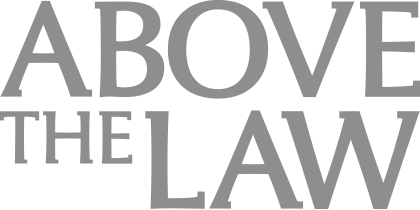First Monday Musings By Dean Vik Amar: Reflections On The Upcoming ‘Law School Docket’
What items are on the collective docket of American law schools in the near and intermediate futures?
 For a constitutional scholar like me, the first Monday in October always triggers reflections on the docket for the upcoming months. But as a law school dean, I tend nowadays to think of dockets not just in terms of judicial cases, but also in terms of the issues confronting law schools. So what items are on the collective docket of American law schools in the near and intermediate futures? Here are three.
For a constitutional scholar like me, the first Monday in October always triggers reflections on the docket for the upcoming months. But as a law school dean, I tend nowadays to think of dockets not just in terms of judicial cases, but also in terms of the issues confronting law schools. So what items are on the collective docket of American law schools in the near and intermediate futures? Here are three.
Bar exam results in many larger states will begin to be released in the coming weeks. We know that the average performance by test takers nationally on the multistate multiple choice exam was down, dropping to a level not seen in about three-and-a-half decades. We also know that such a decline generally signifies (as I say generally because knowing the average performance does not always enable us to know everything about the distribution of scores) a decline in the pass rates of states across the country. This is true not just because the multistate bar exam in most places counts for one-half or so of an individual’s overall bar exam score, but also because many a state will scale, or curve, the aggregate scores of essay questions to the aggregate multistate scores in that state. Of course, an individual test-taker may compensate for a weaker multistate score with a stronger essay score (and vice versa), but a state’s test-taking pool in the aggregate not be able to do so nearly as easily. What this means is that many states will experience lower pass rates for the July 2018 exam than they did for the July 2017 test. Not all states, for sure (and some states with relatively few takers have already bucked the likely trend), but many of the states with the largest number of takers (e.g., California, New York, Illinois, etc.) are likely to see some drop.
As far as I can tell, nobody has a complete answer to why bar exam scores have dropped so much (on average) over the last five or so years. Surely the decline in the volume of law school applicants is a factor, but how big a factor? The multistate exam designers insist they are not increasing the difficulty of the exam questions, and I have no reason to doubt this assertion. Are today’s law students simply not as effective at answering bar exam questions (even controlling for LSAT score and college GPA declines) as they used to be? If so, is this because of changes in law school curricula? Or the makeup, experience, and teaching styles of law school professors? It may take years to fully answer these questions, but law schools — those with very high pass rates and those with lower pass rates — will continue to ponder these queries and try to make adjustments year to year, in both admissions and instruction.

Generative AI at Work: Boosting e-Discovery Efficiency for Corporate Legal Teams
Speaking of JD admissions, law schools continue to engage in discussions with the ABA and each other about whether — and how much — to admit students who have not taken and submitted an LSAT score. There is much email discussion among deans about how schools can undertake validation studies to begin to use GRE scores in lieu of LSAT scores, whether some schools are in better position to undertake such studies, and what options remain for schools that may have difficulties in conducting their own studies.
And moving farther back in the admissions process, law school deans are eager to mine the data from the recently concluded Before the JD study undertaken by the Association of American Law Schools and Gallup with the assistance of LSAC. This study sought to answer a vexing and fundamental question: What factors have contributed to the long-term decline in the percentage of college students who are familiar with and open to pursuing careers in the law? While full analysis of the Before the JD study must await a future column, for now let me say it is clear that law schools need to engage would-be law students earlier in their undergraduate careers (cross selling, if you will, within a university), and indeed much earlier than that. The gradual rebound in employment outcomes for law students (driven largely by a reduction in the number of new law school graduates coming onto the market) and a renewed sense of the importance of the rule of law and government that may be contributing to some increases in the number of people taking the LSAT the last few years, are both factors that perhaps make the next few law school admissions cycles rosier (for law schools, that is) than the last three or four. But if law schools are to regain the relative place they once had against other professional and graduate programs, much work is needed to educate young persons well before the senior year of college to rebuild the pipeline.
 Vikram Amar is the Dean of the University of Illinois College of Law, where he also serves the Iwan Foundation Professor of Law. His primary fields of teaching and study are constitutional law, federal courts, and civil and criminal procedure. A fuller bio and CV can be found at https://www.law.illinois.edu/faculty/profile/VikramAmar, and he can be reached at [email protected].
Vikram Amar is the Dean of the University of Illinois College of Law, where he also serves the Iwan Foundation Professor of Law. His primary fields of teaching and study are constitutional law, federal courts, and civil and criminal procedure. A fuller bio and CV can be found at https://www.law.illinois.edu/faculty/profile/VikramAmar, and he can be reached at [email protected].
Sponsored

Law Firm Business Development Is More Than Relationship Building

Curbing Client And Talent Loss With Productivity Tech


AI Presents Both Opportunities And Risks For Lawyers. Are You Prepared?

Generative AI at Work: Boosting e-Discovery Efficiency for Corporate Legal Teams








